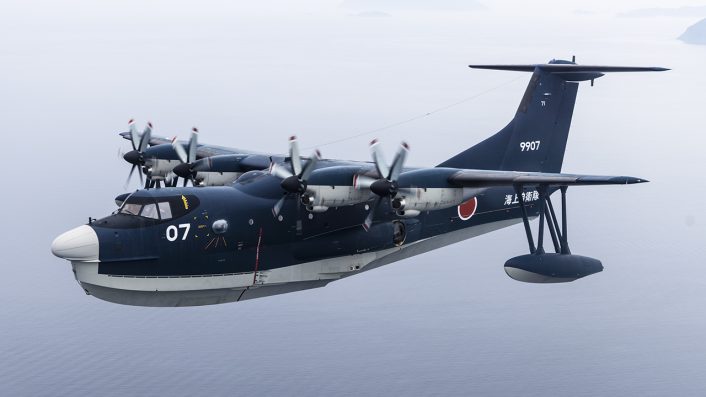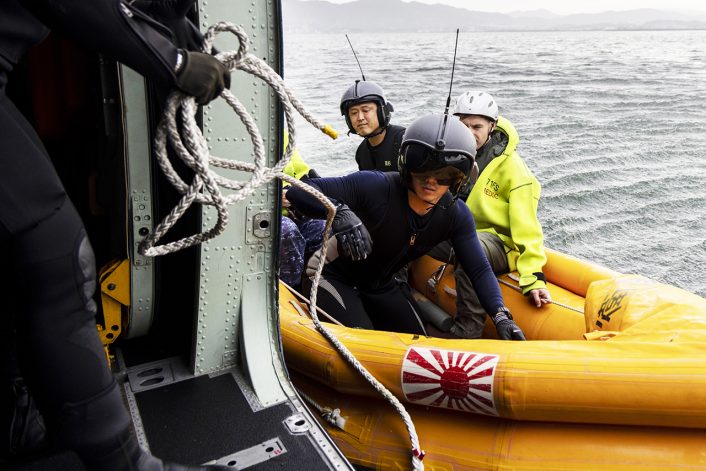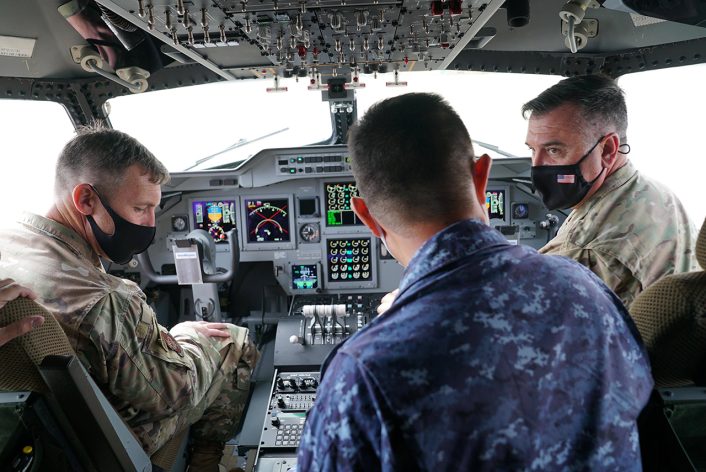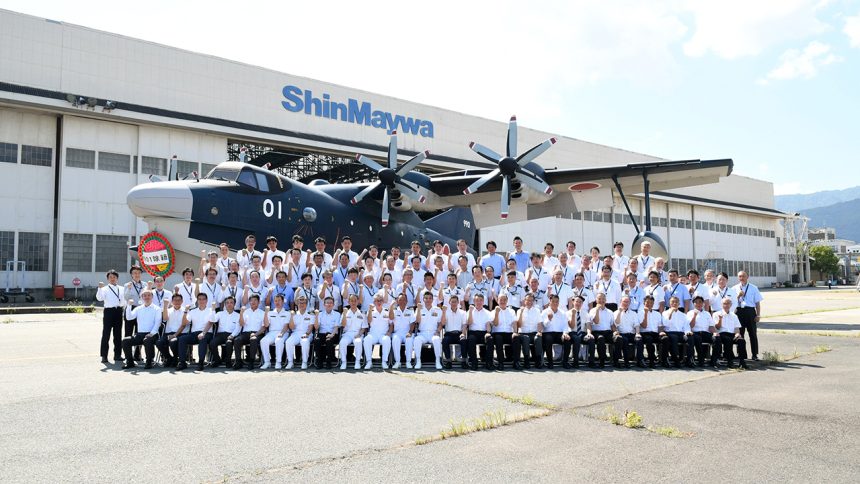On Aug. 7, 2024, after 17 years of military service, Japan retired the first of its distinctive ShinMaywa US-2 amphibious air sea rescue aircraft.
In a decommissioning ceremony held at the ShinMaywa Industries manufacturing plant in Kobe on Aug. 7, Japan, company workers and military personnel commemorated the service life of 9901, the first US-2 to be built. The airframe rolled out of the factory in April 2003 before making its inaugural flight in December of that year. Five years of trials and testing later, 9901 entered service with the Japan Maritime Self-Defense Force (JMSDF) in March 2007.
The now 21 year old aircraft is a modern derivative of the 1970s era ShinMaywa US-1, featuring more modern Rolls-Royce AE 2100 turboprop engines (similar to those found on the Lockheed C-130J), a glass cockpit, fly-by-wire controls, and a pressurized hull.
8月7日(水)、新明和工業株式会社にて、US-2 01号機除籍セレモニーが行われました🛬2007年3月に第71航空隊(岩国)に部隊配属されて以来、約17年間の救難任務を全うし、除籍を迎えることになりました。誠にお疲れ様でした🙇♂️#新明和工業 #US-2 #海上自衛隊 #阪神基地隊 #阪基 #JMSDF pic.twitter.com/TsQqnQKhOt
— 海上自衛隊 阪神基地隊【公式】 (@jmsdf_hanki_pr) August 8, 2024
Originally designated US-1A Kai, with Kai in this context meaning “change” or “revision” in Japanese, the US-2 moniker was assigned as 9901 began initial testing. A similar use of this Japanese term was seen with the F-4EJ Kai Phantom II.
The original US-1 was joined in service by the PS-1, an anti-submarine warfare and maritime patrol variant of the airframe. When Japan decided to purchase P-3 Orions in the early 1980s, the PS-1 was superseded and eventually retired in 1989.
The US-1 soldiered on until 2017, serving for ten years alongside its US-2 replacement. No ASW/MPA variant of the US-2 has been built, as Japan has developed the Kawasaki P-1 to replace its aging Orion fleet, though it remains a possible option should a customer be interested.
Instead, the US-2’s role is as an air sea rescue aircraft, combining the long range of a large fixed wing turboprop with an amphibious capability, allowing the aircraft to deploy and recover watercraft, directly rescuing people from the ocean – something that is usually limited to helicopters.

9901’s retirement appears to leave Japan with six active US-2 airframes, with one other having been written off in a serious incident in 2015 which resulted in several injuries amongst the crew. Japan’s initial requirements were for 14 aircraft, though production of US-2s has been very slow.
Interest by other countries
Manufacturer ShinMaywa is only able to accommodate two airframes in build simultaneously, and relies heavily on other manufacturers like Kawasaki and Mitsubishi for major fabrication work of sections of the airframe before completing final assembly at the plant in Kobe.
This slow build process is unlikely to have helped turn foreign sales opportunities in ShinMaywa’s favor. Various nations have expressed interest in the US-2 platform, though none have so far been forthcoming with orders. In 2018 it was reported that Greece was interested in procuring US-2 airframes for use in an aerial firefighting role, but six years later have committed to purchase seven DHC-515s from Canada instead.

Tours conducted of US-2 aircraft by high ranking U.S. Air Force Special Operations Command (AFSOC) personnel in 2022 fueled speculation regarding a potential American interest in acquiring the aircraft, though no official comment has been made. The aircraft’s utility for AFSOC would seem to be in special forces operations in the Pacific, enabling long range special forces deployments and landings in austere locations with no suitable area on land for a conventional aircraft to land. The existing US-2 airframe is fairly limited in terms of cargo and weapons capacity, though, with no external hardpoints and no cargo door.
A floatplane development of the Lockheed C-130 has long been discussed as an option for AFSOC, and this would fit in much more neatly with existing supply chains and operational knowledge, though it would appear this proposal is currently shelved. Other more ambitious DARPA projects are also rumored to be in the pipeline.
The reason for the retirement of this US-2 airframe has not been publicly confirmed, but is likely down to airframe age and wear and tear (from being one of the prototypes). Continued operation of the US-2 in JMSDF service is still planned for many years to come, with the ninth example of the aircraft known to currently be in production.










